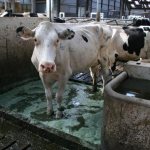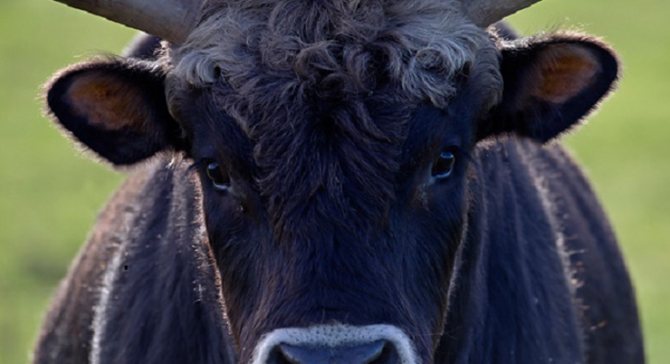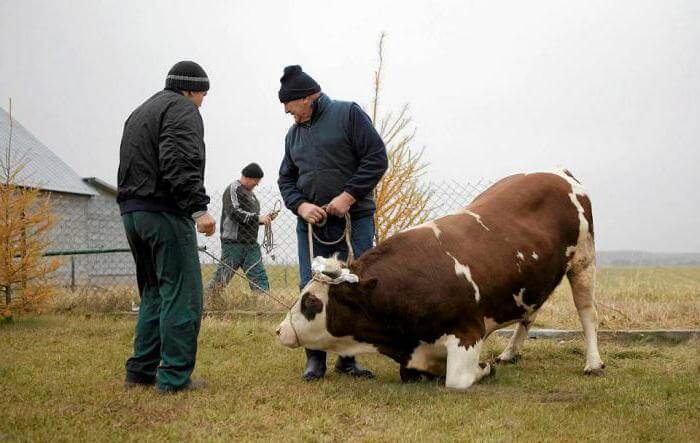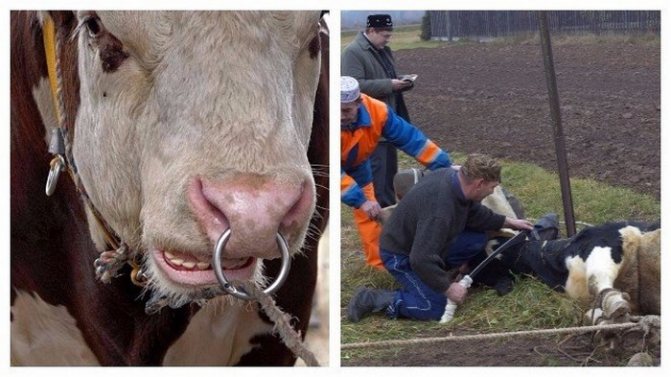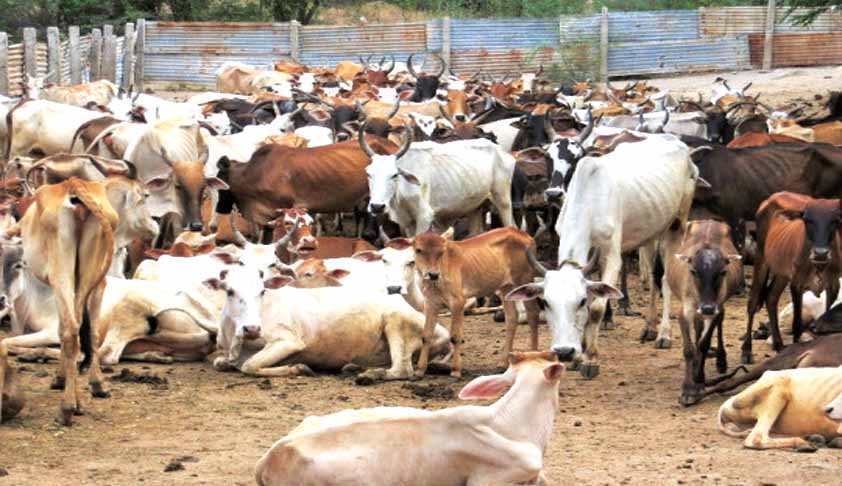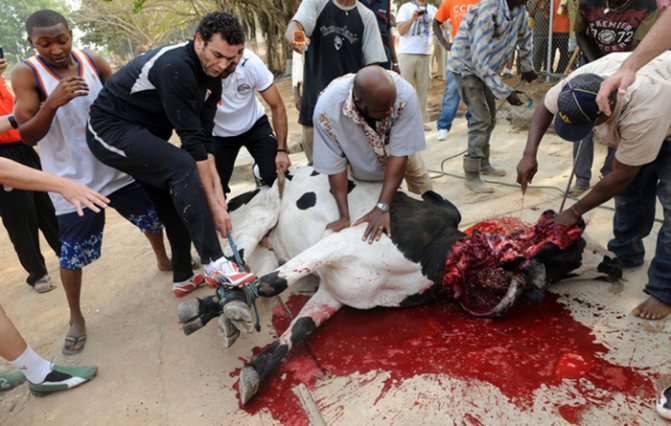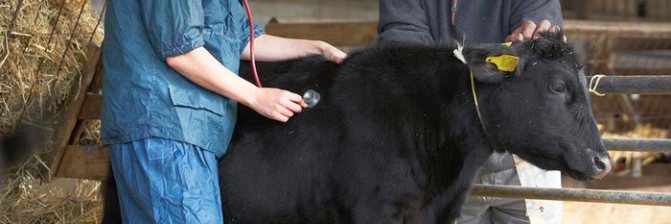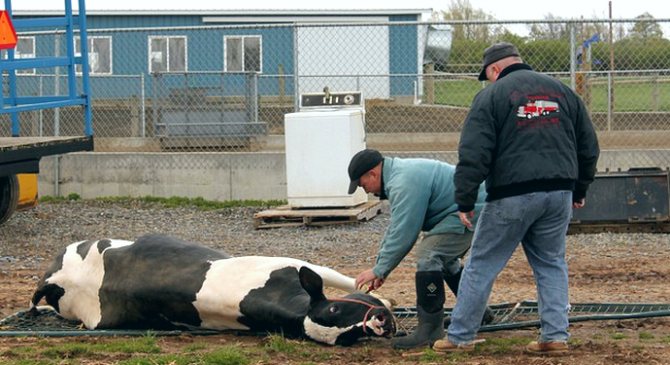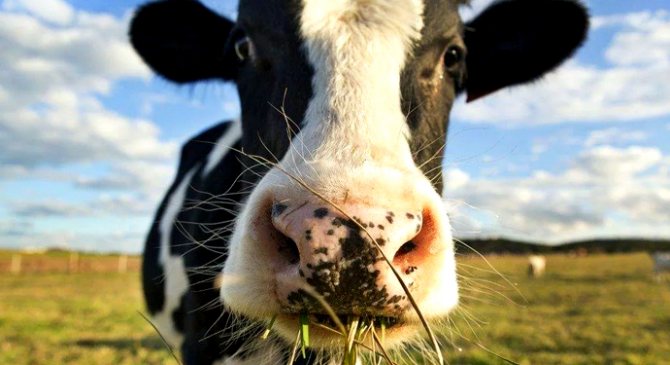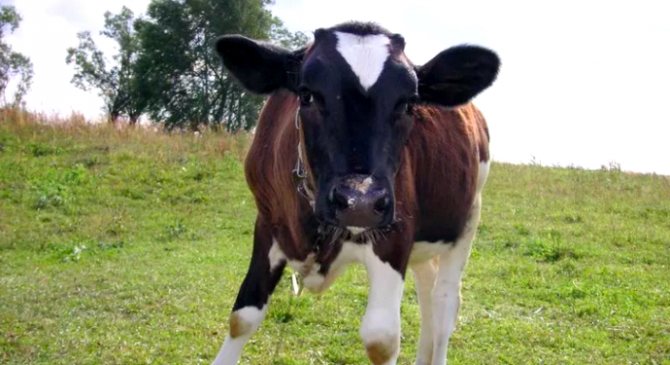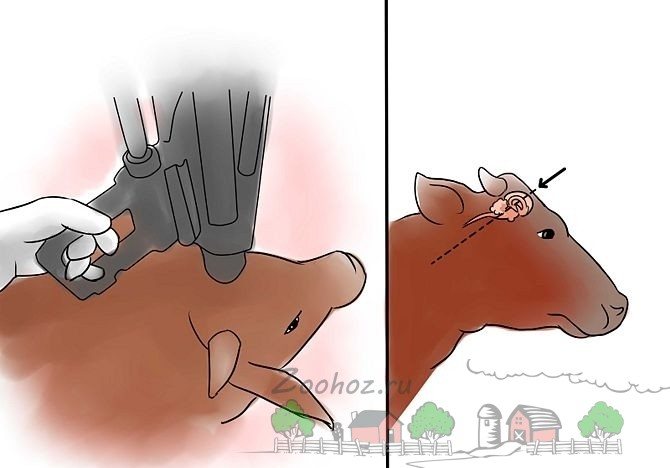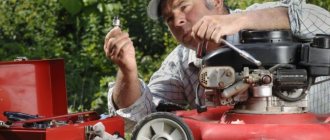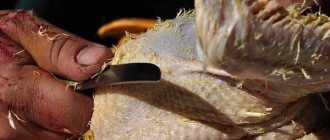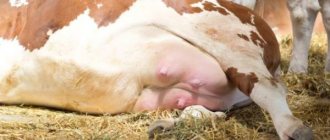To obtain carcasses of cattle, animals must be transported to specially equipped enterprises (slaughterhouses or meat processing plants). In some regions, self-slaughtering of livestock is allowed in household plots. This process requires certain knowledge and preparation, since it must be carried out quickly and, if possible, painless for the animal.
You will find useful tips for preparing bulls and cows for slaughter in this article. It also describes the most common slaughtering technologies, as well as methods for cutting carcasses and processing hides.
- Skinning
- Bull preparation
- Skinning
When is the best time to slaughter a bull?
Experienced breeders recommend slaughtering a bull at one year of age. During the first year of life, the animal quickly gains weight, while the cost of its nutrition is not too high. In the future, the weight gain does not increase so actively. However, gobies born in spring should be cut later - closer to autumn. This recommendation is justified - in the summer, the animal receives a lot of plant food, due to which it quickly gains body weight, while the quality of meat improves.
Attention! Non-castrated bulls gain weight faster, so you should refrain from this procedure.
The slaughter procedure is carried out in the morning, when it is still cool enough and there are no flies. It is important to bear in mind that cutting the carcass will take about three hours, and an inexperienced person will have even more time.
Slaughter at the meat processing plant: cradle box
It is, of course, necessary to carry out such an unpleasant procedure as the killing of cattle correctly. The quality of meat products directly depends on how accurately the slaughtering technology is followed. In addition, in the process of performing such an operation, the animal itself, of course, should not feel pain.
Some people are also interested in where the cows are killed at the meat processing plant. Such enterprises usually have premises specially equipped for this purpose. Such departments are called slaughterhouses. Actually, the very work of killing livestock in meat processing plants is entrusted exclusively to experienced specialists who are able to carry out this operation accurately and painlessly for animals.
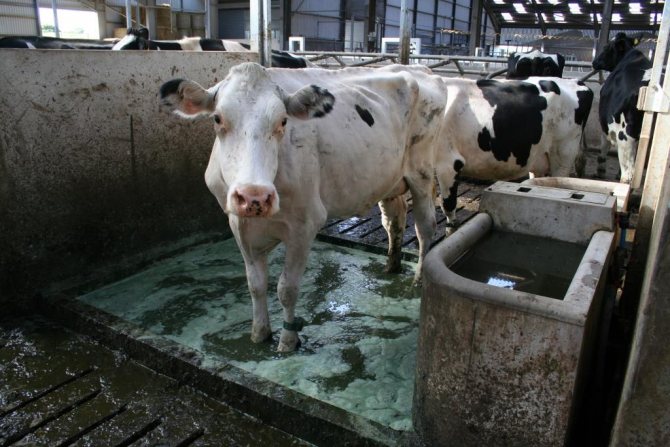
The cattle checked by the veterinarian are driven to the slaughterhouse after daily fasting at the meat-packing plant through special troughs. At the same time, employees of the enterprise try to irritate the cows as little as possible. Unfortunately, the meat of the scared cattle before slaughter becomes dark and loses its marketable appearance. In addition, it also becomes tasteless and unpalatable.
For slaughter, each cow is driven into a special movable cradle, which is an open top box with high walls (preventing the animal from seeing anything around). The right side of such a structure opens, and in the back there is a one-way gate.
Preparatory stage before slaughter
Having made the decision to slaughter the bull, the farmer stops feeding him one day before the killing procedure. During this time, only water is offered to the animal. It helps to cleanse the intestines. Drinking is stopped approximately 3-4 hours before slaughter.It is important to agree in advance about the visit of an employee of the veterinary service - he will examine the animal and give a document giving the right to sell meat. His participation will also be required when cutting carcasses.
You need to kill a cow so that she does not feel fear. Therefore, before slaughter, the animal is taken out early in the morning, as if to graze, trying not to scare it with anything. If the cattle does not want to leave the pen, it is forbidden to drag it by force. Better to try to lure the goby with a bunch of hay or an ear of corn.
How to kill a cow for meat: basic methods
The animal in the cradle does not see anything around, and therefore remains calm. By opening the right side of such a pen, the specialist can, among other things, tie the goby's legs. After the cow has completely calmed down in the box, they begin to slaughter it.
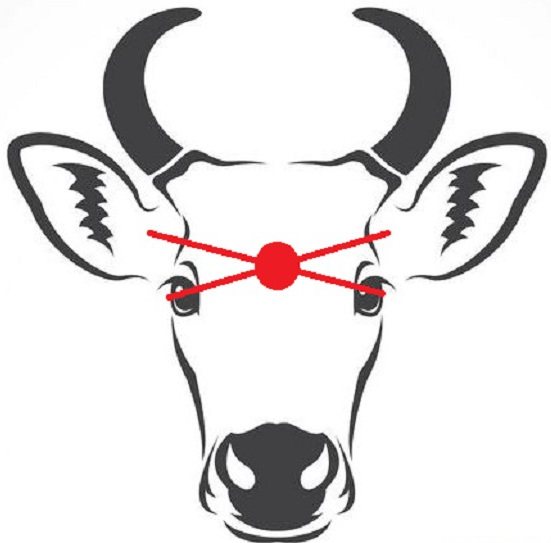

There are many ways to accomplish this procedure. And most of the modern techniques can be considered humane and painless enough for animals. The answer to the question of how cows are killed in meat processing plants can be, for example, the following technologies:
- using a pistol with a special retractable rod;
- electric discharge.
Calves and young livestock in meat processing plants can also be killed with carbon dioxide (CO2). Such a humane method at the enterprises of the country has recently become more and more popular.
Slaughter rules
Before you kill the bull, you need to fix it by tying it with a strong rope by the horns to the support, and then stunning it. To do this, a person strikes a strong blow to the frontal part of the head with a sledgehammer. Some slaughters stun cattle with a dagger, aiming at a depression located at the back of the head, between the cervical vertebra and the occipital bone. After the impact, the animal loses consciousness. It is important to correctly calculate his strength - if he turns out to be weak, there is a possibility that the bull will get angry with fear and injure others. A push too strong can cause instant death, which negatively affects the quality of the meat.
Now you need to act quickly, there are several minutes before the bull comes to his senses. The next step is to dissect the large cervical vessels. If you plan to use blood, then immediately you need to substitute a previously prepared clean container to collect it. After exsanguination of the carcass, they proceed to skinning. Cows are slaughtered in the same way.
Reference. The blood will drain faster if you hang the bull by the hind legs.
How to slaughter a horse at home?
Before deciding to slaughter a horse, you need to make sure that its meat is suitable for human consumption. The meat of the following breeds is definitely edible:
- Kazakh;
- Novoaltaiskaya;
- Yakut.
Yakut horse meat is traditionally used as a folk dish
If you eat the meat of a horse of a different breed, then nothing bad will happen. But there is no point in this, since the meat of other horses is frankly tasteless. But in the listed breeds, it is marbled, juicy. Horses of these breeds have a long massive body, but short legs. With a weight of 400 kg, a horse gives up to 250 kg of pure meat.
Correctly tied horse
Features of slaughtering a horse at home.
| Step | Description |
| 1 | You need to thoroughly prepare for the procedure. A well-equipped area should be created, which is suitable as a barn or outdoor place. On this site there should be a large table, pillars or other ways of tying the horse, a container for blood drainage. |
| 2 | Before a horse is slaughtered, it is stunned with an electric shock or a blow to the head. |
| 3 | The slaughter follows the same principle as the bull procedure described above. |
| 4 | After slaughter, you must wait until the blood has completely drained from the carcass. This takes a long time due to the peculiarities of the horse's body. |
| 5 | Skinning and butchering is also done in a similar fashion to a bull. |
Slaughter of a horse by an incision in the lower part of the neck
Thus, the main difference is the need to equip a suitable site. Many farmers slaughter horses on the ground, making the meat less tasty, darker due to leftover blood, and inferior quality due to gastric waste. Maintaining basic sanitation is an essential part of slaughtering a horse.
Skinning
Skinning begins from the head. This requires:
- Cut off the ears at their base.
- Make a circular incision around the mouth and nose area.
- Cut through the hide, moving from the right nostril to the ear area.
- Make ring cuts around each of the horns.
Now the skin from the head can be carefully removed, if necessary, helping yourself with the tip of the knife. Next, the bull's head is separated from the body by cutting the muscles at the junction of the occipital bone and cervical vertebra.
To remove the skin from the body, it is necessary to fix the carcass in a position on its back. To do this, use bars. Now you need to cut the skin from the neck along the entire carcass, moving along the chest line through the belly to the very tail. A ring-shaped incision is made around the anus. Ring cuts are also made on the limbs above the hooves. From the inside of the thighs, the edge of the knife is led to a longitudinal incision in the abdomen.
First, the skin is carefully pulled from the neck and chest, then from the legs, then it is removed from the abdomen, moving towards the back and scrotum area.
Advice. It is important not to damage the skin when removing with a knife, but also not to allow fragments of fat to remain on it. This takes skill.
After the end of the process, the skin is rolled up so that the wool is outside, and allowed to cool for 2 hours. Then it is treated with salt and sent to a cool room.
Slaughter mini workshop for cattle
After the cattle has grown to the age of slaughter, you can take the animal to the meat processing plant. However, it is much more profitable to use your own mini-slaughterhouses. They are modular. Modular mobile workshops are equipped with all the necessary equipment.
It includes the following modules:
- for slaughter;
- for the primary processing of carcasses.
Can be completed with a module for the production of semi-finished products. For example, in such modules you can stew meat and produce stew.
Growing cattle is quite a profitable business. Therefore, having received the skills of slaughtering animals, you can get high-quality meat, both for your own consumption and for sale.
Removing the entrails
Removing the viscera after skinning is called gutting. It must be carried out no later than 1.5 hours after slaughter in order to prevent the spread of pathogenic microflora from the intestines through the meat. With horizontal gutting, the work proceeds according to the following algorithm:
- With gentle movements, in order to avoid penetration of the intestines, remove the genitals from the bull and the udder from the cow.
- Dissect along the sternum, esophagus so that careless movement does not damage the insides.
- Cut the pubic and pelvic bones with a hatchet.
- Very carefully start extracting the entrails from the top, cutting off the diaphragm near the ribs.
- Take out the spleen and liver. Be careful not to damage your gallbladder.
- Remove the pancreas with the stomach, followed by the intestines.
- Rinse the hollow carcass with cold water to rinse off residual blood.
- Peel off bloody upper parts of the carcass and rinse with water.
How cattle are nourished, see the video below:
Stunning
The most important stage in the process, since slaughtering a bull without stunning it in advance is a sign of cruelty and recklessness. The stunning procedure consists of several steps:
- Fixation of the animal by tying the horns or neck to a strong crossbar.
- Direct blow with the butt of an ax or a hammer on the back of the head.
It is important that the cattle "fall asleep" immediately, and do not have to repeat the blow. To do this, you need to make enough effort.In an unconscious state, the bull will not feel pain, will not be able to harm anyone, and will not have time to get scared, which will ultimately make the meat tough and tasteless.


Carcass cutting
Bull carcass parts diagram
Before proceeding with cutting the carcass, it is necessary to remove the internal organs. It is necessary to cut the chest area with an ax to get to them. First, the esophagus is ligated so that the contents do not stand out from it, and then it is removed. Then the intestines and stomach are removed. When removing the liver, it is important to be careful not to damage the gallbladder. The same recommendation applies to the bladder. If the contents of these organs get on the meat, the product will acquire an unpleasant taste and smell. The heart, spleen, kidneys are also removed.
Attention! At this stage, the veterinarian should examine the carcass and internal organs to ensure that the meat is suitable. If he does not show signs of illness, you can continue butchering the bull.
The next stage - the carcass at home is chopped with a hatchet along the ridge line into two parts, and then in half between the 13th and 14th vertebrae. The tongue, considered a delicacy, is removed from the head. The heart, liver, kidneys, lungs are folded into a clean container, blotted with a cloth.
Then they proceed to further cutting - the meat is rolled, separated from bones, tendons, films, and sorted. The intestines are often used for making homemade sausages, and therefore they are immediately thoroughly washed and sent for conservation.
Attention! Before placing meat in the refrigerator, it must not be washed, otherwise the process of decomposition of tissues will begin.
The sequence for cutting carcasses is as follows:
- First, the neck is cleaned and rolled, after which it is cut into pieces.
- The shoulder blades are removed.
- The ribs are partially or completely cleaned.
- Then they go to the pelvic region - all bones are removed from here.
- Start processing the limbs. They are divided into several parts - thigh, shin and shank; tendons and bones are removed.
- Then the brisket is cut.
- At the very end, the meat is separated from the humerus.
You need to store the product in the refrigerator at a temperature not exceeding 7 degrees. If necessary, you can freeze it, but do it gradually. Rapid freezing degrades the quality of the meat.
Not knowing how to kill a cow or a bull, it is better not to risk it, but to entrust this responsible procedure to an experienced slaughterhouse. The slaughter of cattle carries the risk of incurring losses if you act ineptly. This process is not for the faint of heart. It is important not only to quickly and painlessly kill the animal, but also to properly cut the carcass. In the absence of experience, it will take half a day, and at elevated air temperatures, the meat during this time can begin to deteriorate.

